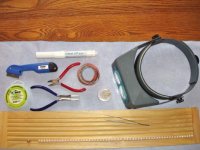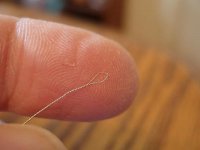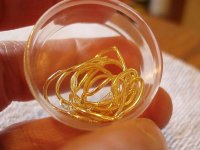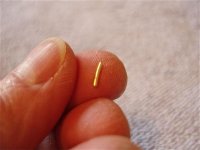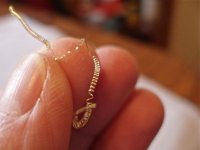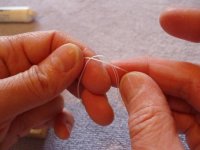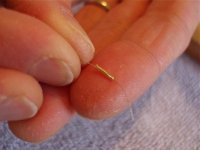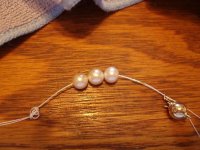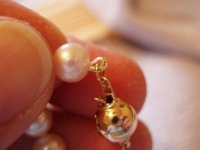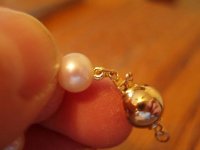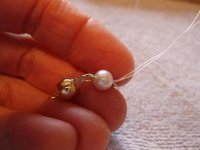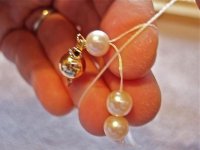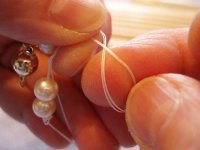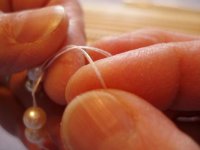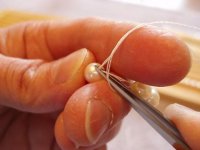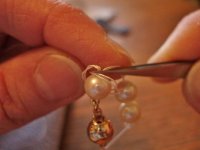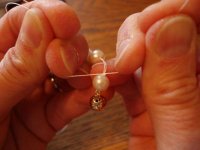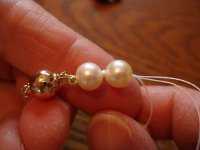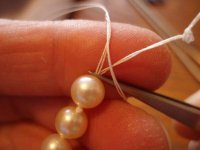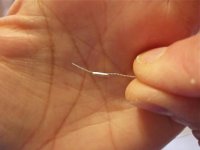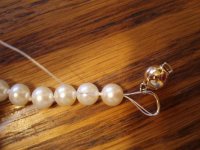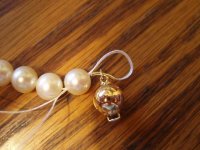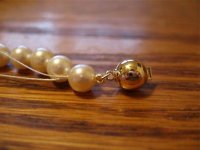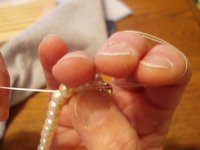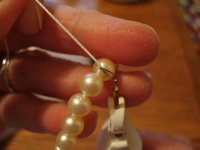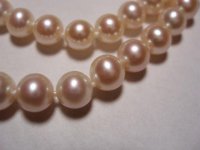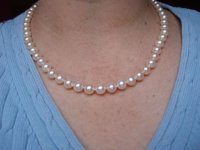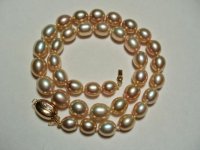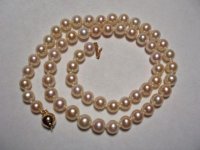Pearl Dreams
Pearl Enthusiast
How to string (or restring) your pearls on doubled Pattye's Serafil, Beaders Secret, and Power Pro
This is not hard-- really! It is harder to describe it than to do it. Anyone can learn to string their own pearls!
If after reading through this, it sounds too daunting, I suggest making a mini-strand for practice first. Make one 12-15 pearls long just so you can practice how to knot the end 3 pearls on each side and attach the clasps; the middle pearls are easy to knot.
To just practice knotting (without bothering with clasps), make an overhand knot, string on a pearl (or any bead), and keep on knotting and adding pearls until you feel comfortable with your knotting technique. Then cut the pearls or beads apart to reuse them.
If you don't understand anything here, please post, or message me.
I can always add more photos if any step is still unclear.
Which thread to use
You can use silk or another thread if you prefer, but I am going to recommend synthetic threads, specifically Pattye's Serafil, Beaders Secret and Power Pro.
*Edit: See pages 4 & 5 where I tested Pattye's Serafil and Beaders Secret, sold on Etsy; particularly recommended for colored pearls when you want matching thread. Also recommended if you do not want to use tweezers to seat the knot correctly-- this thread is slippery and the knot glides into place when the 2 threads are pulled apart.
Why Pattye's Serafil, Beaders Secret or Power Pro instead of silk? Power Pro, Pattye's Serafil and Beaders Secret don't stretch out and stay cleaner than silk (but can be washed or worn in the shower.) They are strong and durable, make tight, elegant knots and don't twist and tangle while you are working with them, as twisted silk thread does. You can sometimes even unpick an accidental knot, which is nearly impossible with silk.
Pattye's Serafil and Beaders Secret come in many colorfast colors. Colors of Power Pro are limited, however. Use Moss Green for black or dark pearls and White for other color pearls.
If you need to use very fine white thread, Power Pro 10# test is very strong and preferable to silk. I have had fine silk break when tugging the doubled threads apart to seat the knot, whereas 10# (thin) Power Pro won't break when tugged firmly. The finest size of Serafil is also good for very small pearls.
_________________________________________________
Abbreviated Instructions-- to show you it is not really so complicated!
I will expand on these instruction in the tutorial below; after you have made your first strand, this abbreviated version may be all you need to remind you what to do the next time.
1. Cut a length of thread 5 times the anticipated final length of the knotted strand.
2. Thread the needle, double the thread and make a large knot, then string on the first 4 pearls in reverse order.
3. String on a bit of gimp, then pass the needle through the clasp and back through the end pearl. Snug up the thread + gimp + clasp carefully.
4. Make an overhand knot with the thread around the existing thread between the end pearl and the next pearl.
5. Use a pair of pointy tweezers (or an awl or darning needle) to guide the knot next to the pearl. To seat the knot, pull the two threads apart firmly. EDIT: Tweezers are not necessary when using Serafil / Beaders Secret thread. The knot slides into place when the two threads are separated firmly.
6. Pass the needle through the next pearl, knot, then the 3rd pearl and knot.
7. Pass the needle through the 4th pearl but do not make a knot yet. Trim off the original knot close to the pearl.
8. Now make a knot after the 4th pearl. Keep going, knotting between each pearl until you get to the last 4 pearls from the other end-- just pass the needle through all 4 of them without knotting.
9. String on gimp, then the other end of the clasp, then pass the needle back through the end pearl. Snug up the thread.
10. Knot between the end pearl and second pearl. Pass the needle back through the 2nd pearl from the end, make a knot, then repeat with the 3rd pearl, knot.
11. Pass the needle one more time through the 4th pearl, but do not make a knot. Just trim thread close to the pearl. The trimmed-off tail will thus be concealed inside the 4th pearl, for a neat look.
5/30/22 I updated the links. They seem to have been broken when PG changed platform.
If I see any other other links that are broken, I'll update them.
For knotting an "endless" strand (without a clasp) see post #42, on page 3 of this thread.

Stringing Tutorial with photos: Stringing on Serafil, Beaders Secret & Power Pro
Thanks. I used the flame so far on Powerpro as my glue hardened, but it is a bit dangerous. I think I will move to glue and crimp beads now that I am mostly done with high carat gold.
To string on all the pearls at once, and then knot in between (this is the way I do it nowadays) see post #31.

Stringing Tutorial with photos: Stringing on Serafil, Beaders Secret & Power Pro
Please thank your daughter again for us also! We get often get inquiries about stringing, so it's great to have some good basic info right here!
For knotting a strand with thread and silicone bead bumpers (it's quicker-- fewer knots!) see post #153:

Stringing Tutorial with photos: Stringing on Serafil, Beaders Secret & Power Pro
Excellent suggestion Cathy!!!
Edit: I'm adding a link to LloydJewelry's YouTube video entitled:

